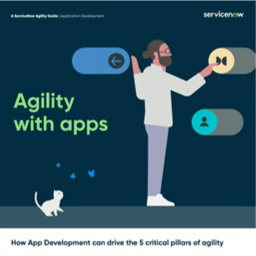Agility with apps
Today, companies are increasingly relying on the partnership between people and technology to deliver an agile response to real-time market conditions. The result is nothing less than a workflow revolution—the clearest manifestation of digital transformation. But technology is only one piece of the equation. A powerful part of an agile company is its people and culture. A great culture needs great empathy, which starts with listening and feeling the pain or the opportunity in someone else's world. What our technology can do is almost limitless. So, the question is, where do we need to go? As your people and your customers guide you towards the next objective, you must then be able to execute. Enterprises must move quickly, be resourceful, and embrace adaptability. Once you're able to accomplish fast, graceful innovation, then you'll be agile enough to move in any direction you want.
Read More
By submitting this form you agree to ServiceNow contacting you with marketing-related emails or by telephone. You may unsubscribe at any time. ServiceNow web sites and communications are subject to their Privacy Notice.
By requesting this resource you agree to our terms of use. All data is protected by our Privacy Notice. If you have any further questions please email dataprotection@techpublishhub.com
Related Categories: Applications, Collaboration, Digital transformation, Enterprise Software, ERP, ITSM, Service Management, ServiceNow, Software


More resources from ServiceNow

Why Strategic Automation Empowers Employees i...
Process efficiencies and cost savings are among the most common benefits of automation, but its impact on empowering employees has rarely bee...

Transformation 2022: Expanding your digital t...
To thrive in this sea of change, you need to power constant transformation in your enterprise. But where should you focus your investment? In this ...

Take control of diverse and rapidly evolving ...
Today's enterprises face diverse and rapidly evolving risks, including expanding regulatory requirements, cyberattacks and data breaches. Any one o...